Veterinary Education and Training on Non-Traditional Companion Animals, Exotic, Zoo, and Wild Animals: Concepts Review and Challenging Perspective on Zoological Medicine
Abstract
Simple Summary
Abstract
1. Introduction
2. Material and Methods
3. Results and Discussion
3.1. Consolidating the Concepts and the Appropriate Terminology: Zoological Medicine and One Health
3.2. The Practice of Zoological Medicine: From the Historical Roots to the Current New Scenarios
3.2.1. Zoological Medicine Applied to Non-Traditional Companion Animals (NTCAs) in Private Veterinary Clinics and Hospitals: From Just “Collecting Animals” to Responsible Ownership of Exotic and Non-Conventional Pets
3.2.2. Zoological Medicine Applied to Exotic and Wild Fauna in Captivity on Zoos and Parks: From “Menageries” to Bioparks
3.2.3. Zoological Medicine Applied to Wildlife: From Hunting Management to Eco-Pathology and Rehabilitation Centres
3.3. Social Demand and Training Needs on Zoological Medicine
3.4. Educational Programs and Veterinary Perception of Professional Skill and Competence in Zoological Medicine
4. Conclusions
Author Contributions
Funding
Institutional Review Board Statement
Informed Consent Statement
Data Availability Statement
Acknowledgments
Conflicts of Interest
References
- Redrobe, S. Redefining and developing exotic animal medicine. J. Small Anim. Pract. 2008, 49, 429–430. [Google Scholar] [CrossRef] [PubMed]
- Chitty, J. Non-Traditional Companion Animals. 2022. Available online: https://www.bsava.com/position-statement/non-traditional-companion-animals/ (accessed on 29 March 2023).
- Sampaio, M.B.; Schiel, N.; Souto, A.D.S. From exploitation to conservation: A historical analysis of zoos and their functions in human societies. Ethnobiol. Conserv. 2020, 9, 2. [Google Scholar] [CrossRef]
- Rose, P.E.; Riley, L.M. Expanding the role of the future zoo: Wellbeing should become the fifth aim for modern zoos. Front. Psychol. 2022, 13, 1018722. [Google Scholar] [CrossRef]
- Stoskopf, M.K. Current perspectives on curriculum needs in zoological medicine. J. Vet. Med. Educ. 2006, 33, 331–337. [Google Scholar] [CrossRef] [PubMed]
- Weinhold, B. Conservation Medicine: Combining the Best of All Worlds. Environ. Health Perspect. 2003, 111, A524–A529. [Google Scholar] [CrossRef]
- Stoskopf, M.K.; Paul-Murphy, J.; Kennedy-Stoskopf, S.; Kaufman, G. American College of Zoological Medicine recommendations on veterinary curricula. J. Am. Vet. Med. Assoc. 2001, 219, 1532–1535. [Google Scholar] [CrossRef]
- Delarada, R.S. Challenges in wildlife conservation and management. The contribution of veterinary doctors. Cienc. Vet. 2020, 22, 181–188. [Google Scholar] [CrossRef]
- Schwabe, C.W. Veterinary Medicine and Human Health, 1st ed.; Williams & Wilkins: Baltimore, MD, USA, 1964. [Google Scholar]
- Kock, M.D. Wildlife, people and development: Veterinary contributions to wildlife health and resource management in Africa. Trop. Anim. Health Prod. 1996, 28, 68–80. [Google Scholar] [CrossRef]
- One Health. Available online: https://www.avma.org/resources-tools/one-health (accessed on 28 December 2022).
- Palacios-Díaz, M.D.P.; Mendoza-Grimón, V. Environment in Veterinary Education. Vet. Sci. 2023, 10, 146. [Google Scholar] [CrossRef]
- Morgado García, A.J. Conocer a Los Animales: Historia Natural, Coleccionismo y Mascotas en la Edad Moderna Española. Silex. 2017. Available online: http://dialnet.unirioja.es/servlet/articulo?codigo=6974591 (accessed on 28 December 2022).
- The Editors of Encyclopaedia Britannica. Pet. Available online: https://www.britannica.com/animal/pet (accessed on 15 December 2022).
- FEDIAF. European Pet Food Annual Report 2022. 2022. Available online: https://europeanpetfood.org/about/annual-report/ (accessed on 20 October 2022).
- U.S Pet Market Focus. Available online: https://www.freedoniagroup.com/packaged-facts/fish-small-mammal-herptile-bird-products-pet-trends-opportunities (accessed on 28 December 2022).
- Goins, M.; Hanlon, A.J. Exotic pets in Ireland: 2. Provision of veterinary services and perspectives of veterinary professionals’ on responsible ownership. Ir. Vet. J. 2021, 74, 13. [Google Scholar] [CrossRef]
- Toland, E.; Bando, M.; Hamers, M.; Cadenas, V.; Laidlaw, R.; Martínez-Silvestre, A.; Van Der Wielen, P. Turning negatives into positives for pet trading and keeping: A review of positive lists. Animals 2020, 10, 2371. [Google Scholar] [CrossRef]
- Parker, M. The genealogy of the zoo: Collection, park and carnival. Organization 2020, 28, 604–620. [Google Scholar] [CrossRef]
- Fernandes, D.R.N.; Pinto, M.L.R. Veterinarian’s Role in Conservation Medicine and Animal Welfare. In Veterinary Anatomy and Physiology; IntechOpen: London, UK, 2000; Available online: www.intechopen.com (accessed on 12 May 2023).
- Slatch, A.K. Landscape Immersion-Understanding Zoo Designs; ResearchGate: Berlin, Germany, 2015. [Google Scholar] [CrossRef]
- Njeru, G. Hope of saving rhino from extinction remains alive. New Sci. 2021, 249, 16. [Google Scholar] [CrossRef]
- Vaughan, A. Back from the brink. New Sci. 2021, 249, 42–45. [Google Scholar] [CrossRef]
- Pérez Garrido, A.J. Medio Ambiente, Fauna Silvestre y Ciencias Veterinarias. 2017. Available online: https://www.researchgate.net/publication/350637173 (accessed on 12 May 2023).
- Daszak, P.; Cunningham, A.A.; Hyatt, A.D. Emerging Infectious Diseases of Wildlife—Threats to Biodiversity and Human Health. Science 2000, 287, 443–449. [Google Scholar] [CrossRef] [PubMed]
- Smith, D.A. Zoological medicine education in Canada: Options and opportunities. J. Vet. Med. Educ. 2006, 33, 394–400. [Google Scholar] [CrossRef]
- Chomel, B.; Marano, N. Essential veterinary education in emerging infections, modes of introduction of exotic animals, zoonotic diseases, bioterrorism, implications for human and animal health and disease manifestation. OIE Rev. Sci. Tech. 2009, 28, 559–565. [Google Scholar] [CrossRef] [PubMed]
- Bocanegra, G.I.; Casas, A.A.; Rodríguez, C.B.; Martínez, A.C.; Terriza, D.C.; Ruiz, S.J.; García, I.A.; Rodríguez, F.M.; Plaza, A.D.; Lloret, J.M.N.; et al. Desarrollo de ompetencias y contenidos sobre fauna silvestre en el Grado de Veterinaria y Máster en Medicina, Sanidad y Mejora Animal. Rev. Innovación Buenas Prácticas Docentes 2018, 5, 11–17. Available online: https://journals.uco.es/ripadoc/article/view/10964/10106 (accessed on 12 May 2023). [CrossRef]
- Norris, S. A New Voice in Conservation. Bioscience 2009, 51, 7–12. [Google Scholar] [CrossRef]
- Mazet, J.A.; Hamilton, G.E.; Dierauf, L.A. Educating veterinarians for careers in free-ranging wildlife medicine and ecosystem health. J. Vet. Med. Educ. 2006, 33, 352–360. [Google Scholar] [CrossRef]
- Frölich, K.; Grabitzky, S.E.; Walzer, C.; Delahay, R.J.; Dorrestein, G.M.; Hatt, J.-M. Zoo and wildlife medical education: A European perspective. J. Vet. Med. Educ. 2006, 33, 401–407. [Google Scholar] [CrossRef] [PubMed]
- Ritzman, T.K. New Veterinary Graduates: Spreading their wings and exploring career paths in avian and EXOTIC animal medicine. J. Avian Med. Surg. 2014, 28, 168–172. [Google Scholar] [CrossRef] [PubMed]
- Goins, M.; Hanlon, A.J. Exotic pets in Ireland: 1. Prevalence of ownership and access to veterinary services. Ir. Vet. J. 2021, 74, 14. [Google Scholar] [CrossRef]
- Ostović, M.; Sabolek, I.; Piplica, A.; Žaja, I.Ž.; Menčik, S.; Nejedli, S.; Mesić, Ž. A survey study of veterinary student opinions and knowledge about pet reptiles and their welfare. Animals 2021, 11, 3185. [Google Scholar] [CrossRef] [PubMed]
- Roopnarine, R.; Regan, J.-A. Faculty Perceptions: A Qualitative Study of the Perceived Need, Opportunities, and Challenges of Developing “One Health-One Medicine” in the Medical, Veterinary, and Public Health Curricula. J. Contin. Educ. Health Prof. 2021, 41, 16–23. [Google Scholar] [CrossRef]
- Lepe-Lopez, M.; Guerra-Centeno, D. Wild pets in the veterinary practice of Guatemala. Rev. Investig. Vet. Perú (RIVEP) 2018, 29, 840–847. [Google Scholar] [CrossRef]
- Sigirci, B.D.; Ikiz, S.; Celik, B.; Ak, S. A survey study on self-evaluations of small pet practitioners about exotic pets in Istanbul in 2016. Acta Vet. Eurasia 2019, 45, 9–15. [Google Scholar] [CrossRef]
- Aguirre, A. Essential veterinary education in zoological and wildlife medicine: A global perspective. OIE Rev. Sci. Tech. 2009, 28, 605–610. [Google Scholar] [CrossRef] [PubMed]
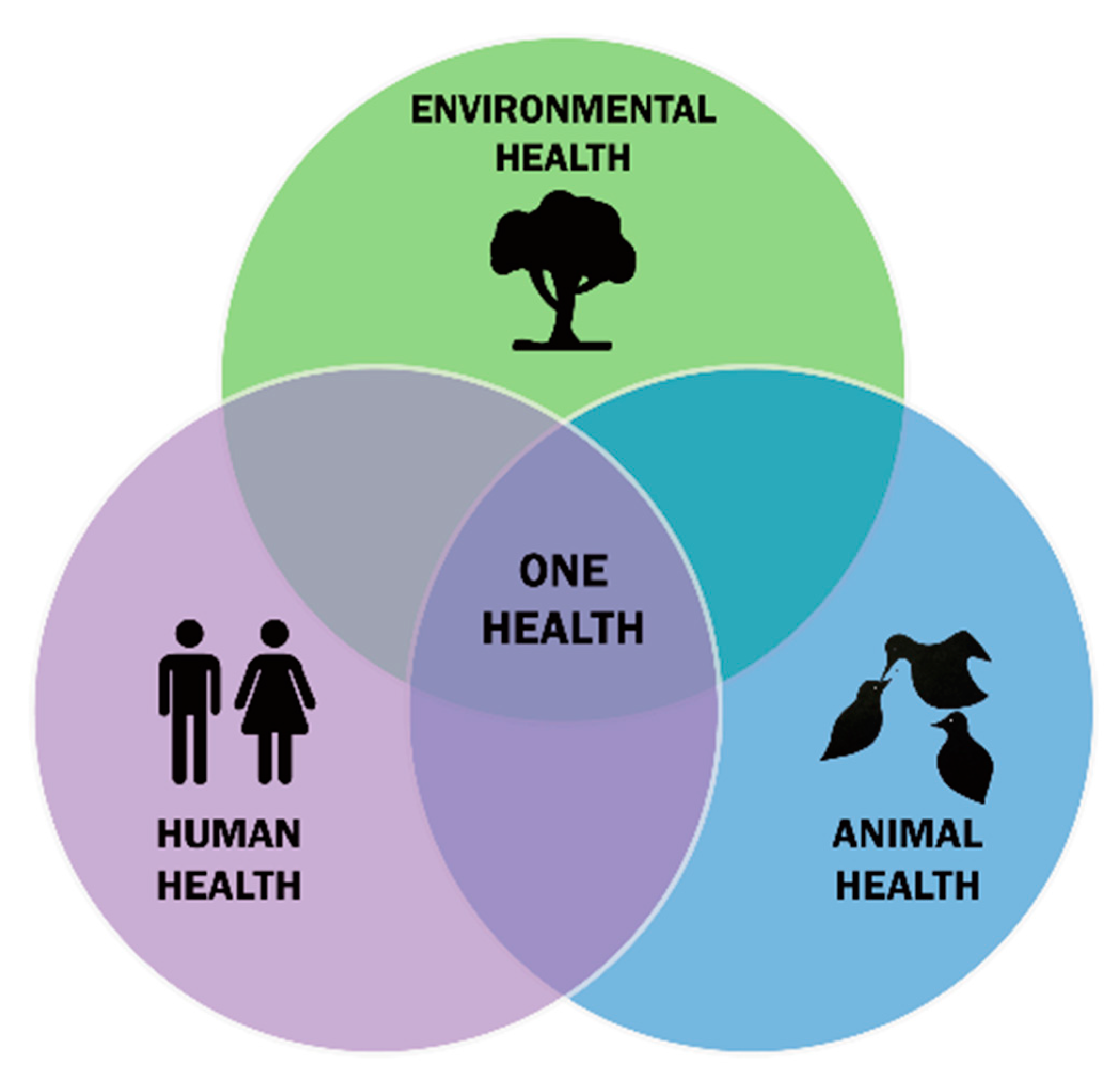
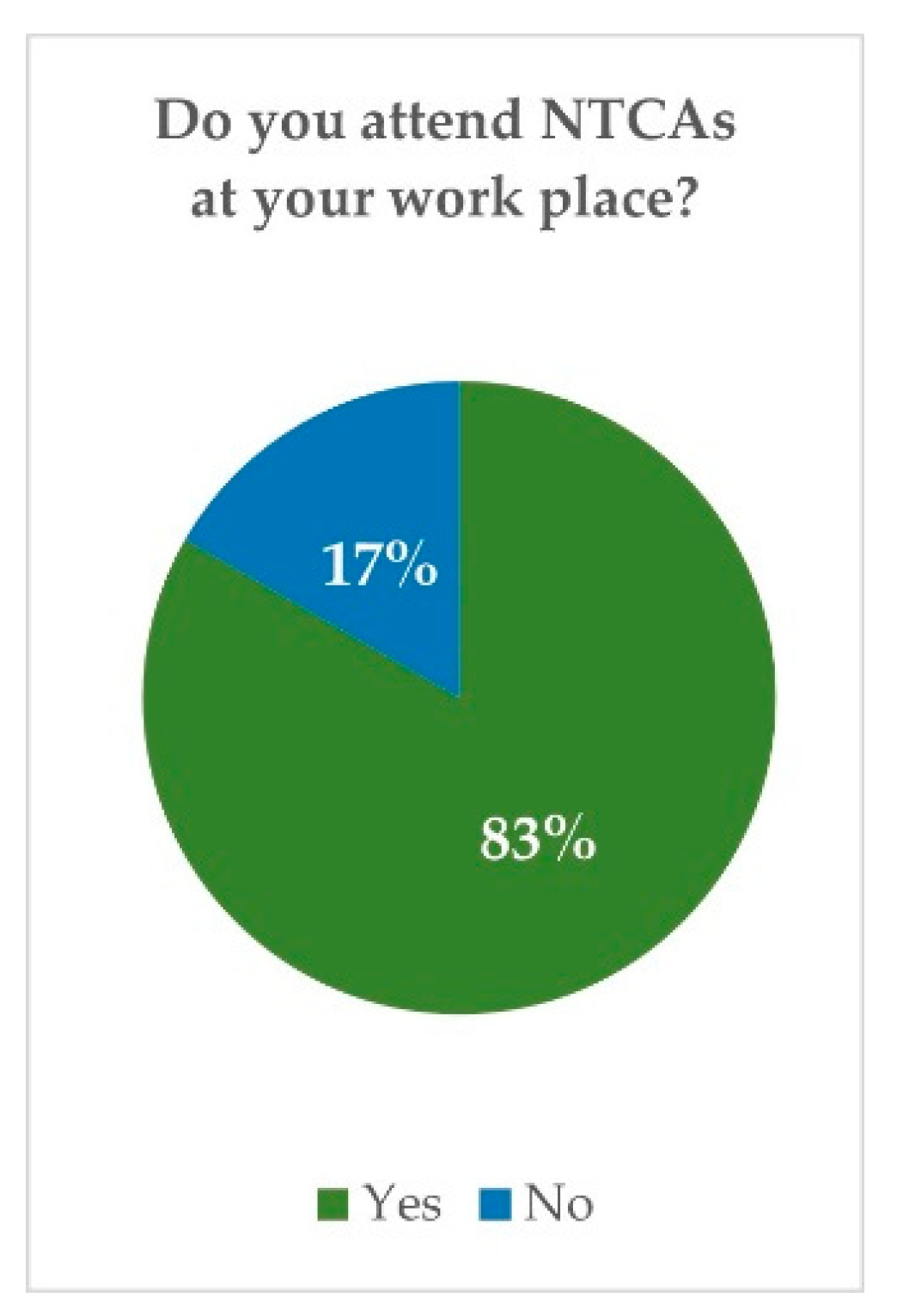

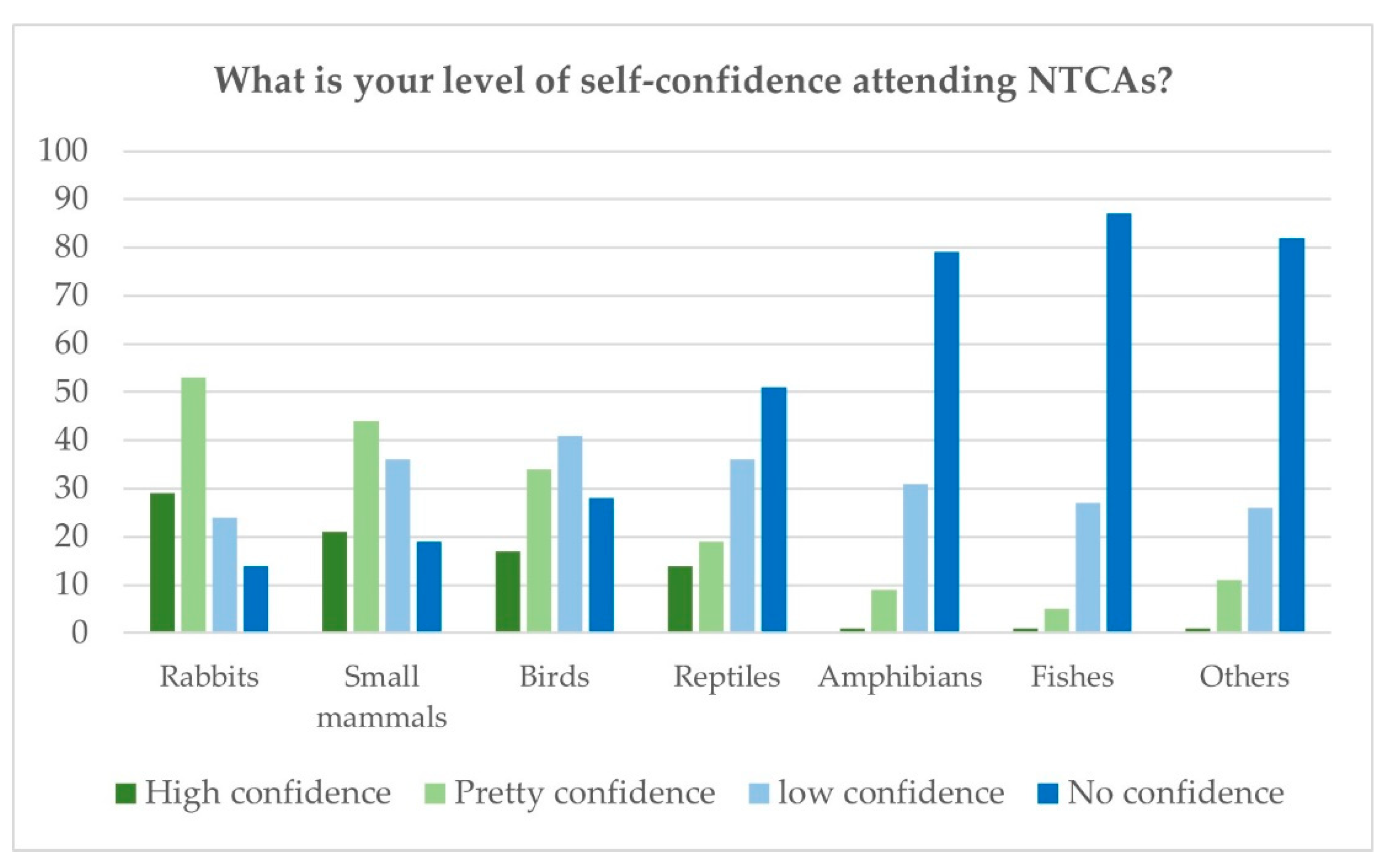
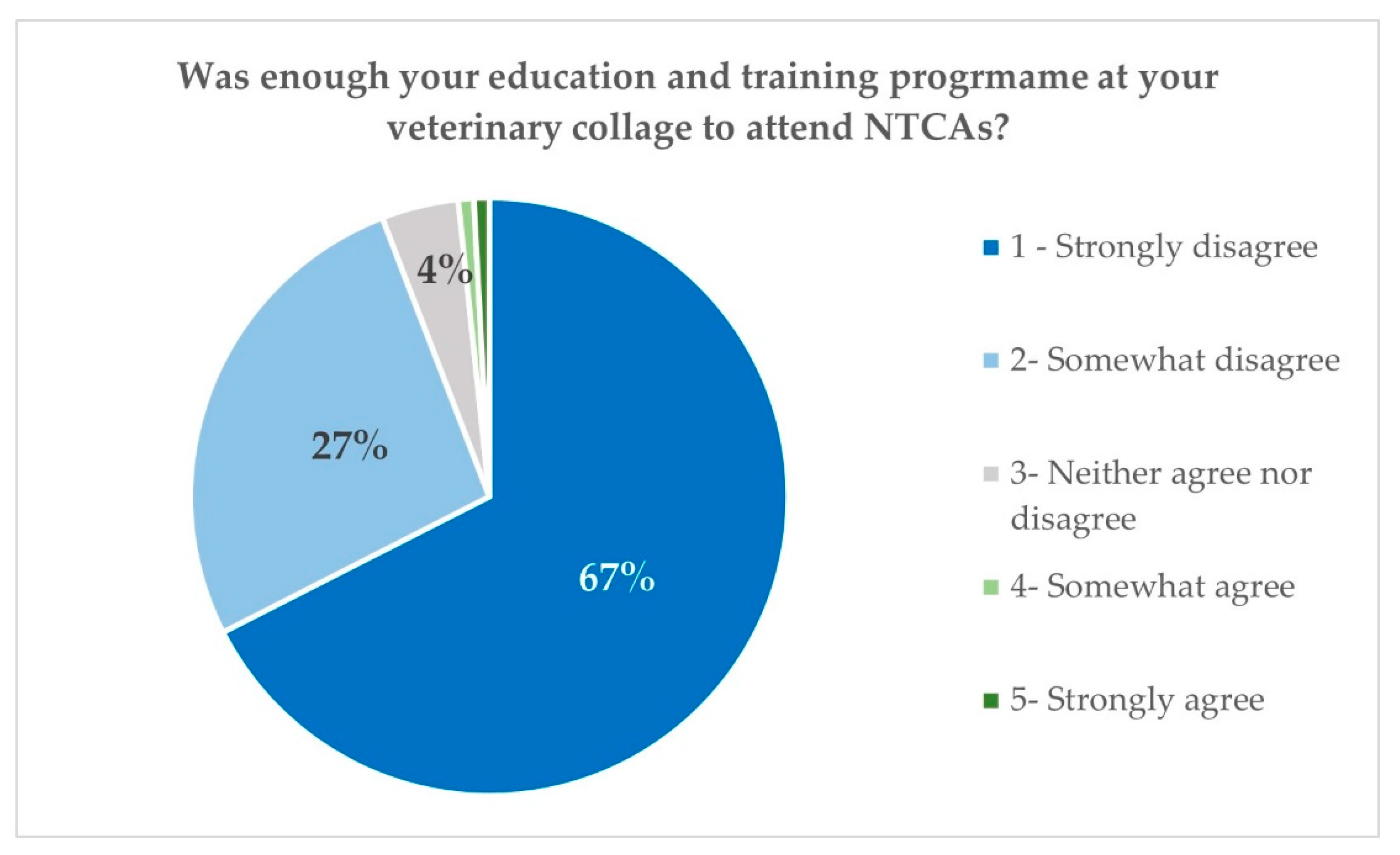
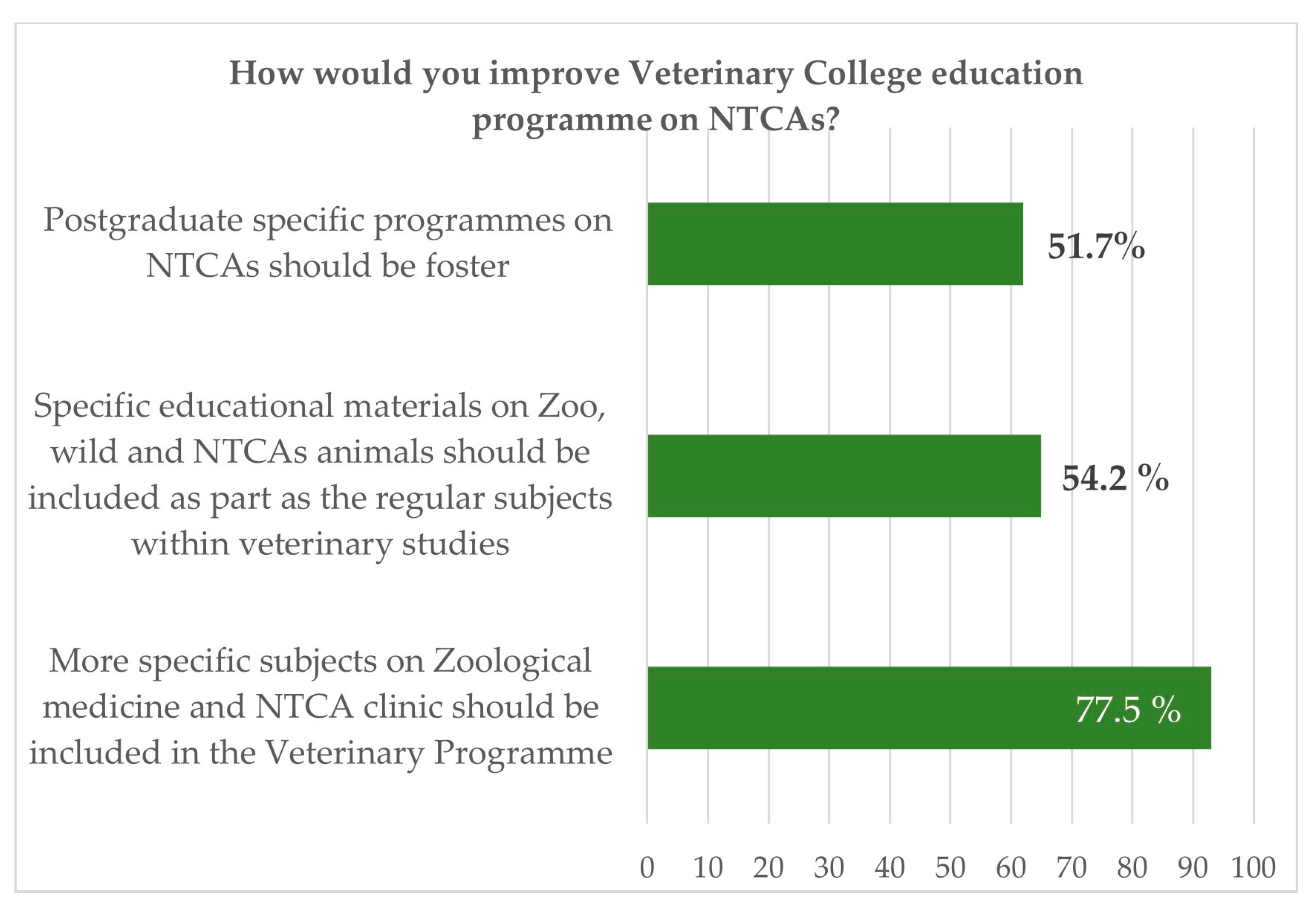
Disclaimer/Publisher’s Note: The statements, opinions and data contained in all publications are solely those of the individual author(s) and contributor(s) and not of MDPI and/or the editor(s). MDPI and/or the editor(s) disclaim responsibility for any injury to people or property resulting from any ideas, methods, instructions or products referred to in the content. |
© 2023 by the authors. Licensee MDPI, Basel, Switzerland. This article is an open access article distributed under the terms and conditions of the Creative Commons Attribution (CC BY) license (https://creativecommons.org/licenses/by/4.0/).
Share and Cite
Espinosa García-San Román, J.; Quesada-Canales, Ó.; Arbelo Hernández, M.; Déniz Suárez, S.; Castro-Alonso, A. Veterinary Education and Training on Non-Traditional Companion Animals, Exotic, Zoo, and Wild Animals: Concepts Review and Challenging Perspective on Zoological Medicine. Vet. Sci. 2023, 10, 357. https://doi.org/10.3390/vetsci10050357
Espinosa García-San Román J, Quesada-Canales Ó, Arbelo Hernández M, Déniz Suárez S, Castro-Alonso A. Veterinary Education and Training on Non-Traditional Companion Animals, Exotic, Zoo, and Wild Animals: Concepts Review and Challenging Perspective on Zoological Medicine. Veterinary Sciences. 2023; 10(5):357. https://doi.org/10.3390/vetsci10050357
Chicago/Turabian StyleEspinosa García-San Román, Jaime, Óscar Quesada-Canales, Manuel Arbelo Hernández, Soraya Déniz Suárez, and Ayoze Castro-Alonso. 2023. "Veterinary Education and Training on Non-Traditional Companion Animals, Exotic, Zoo, and Wild Animals: Concepts Review and Challenging Perspective on Zoological Medicine" Veterinary Sciences 10, no. 5: 357. https://doi.org/10.3390/vetsci10050357
APA StyleEspinosa García-San Román, J., Quesada-Canales, Ó., Arbelo Hernández, M., Déniz Suárez, S., & Castro-Alonso, A. (2023). Veterinary Education and Training on Non-Traditional Companion Animals, Exotic, Zoo, and Wild Animals: Concepts Review and Challenging Perspective on Zoological Medicine. Veterinary Sciences, 10(5), 357. https://doi.org/10.3390/vetsci10050357





